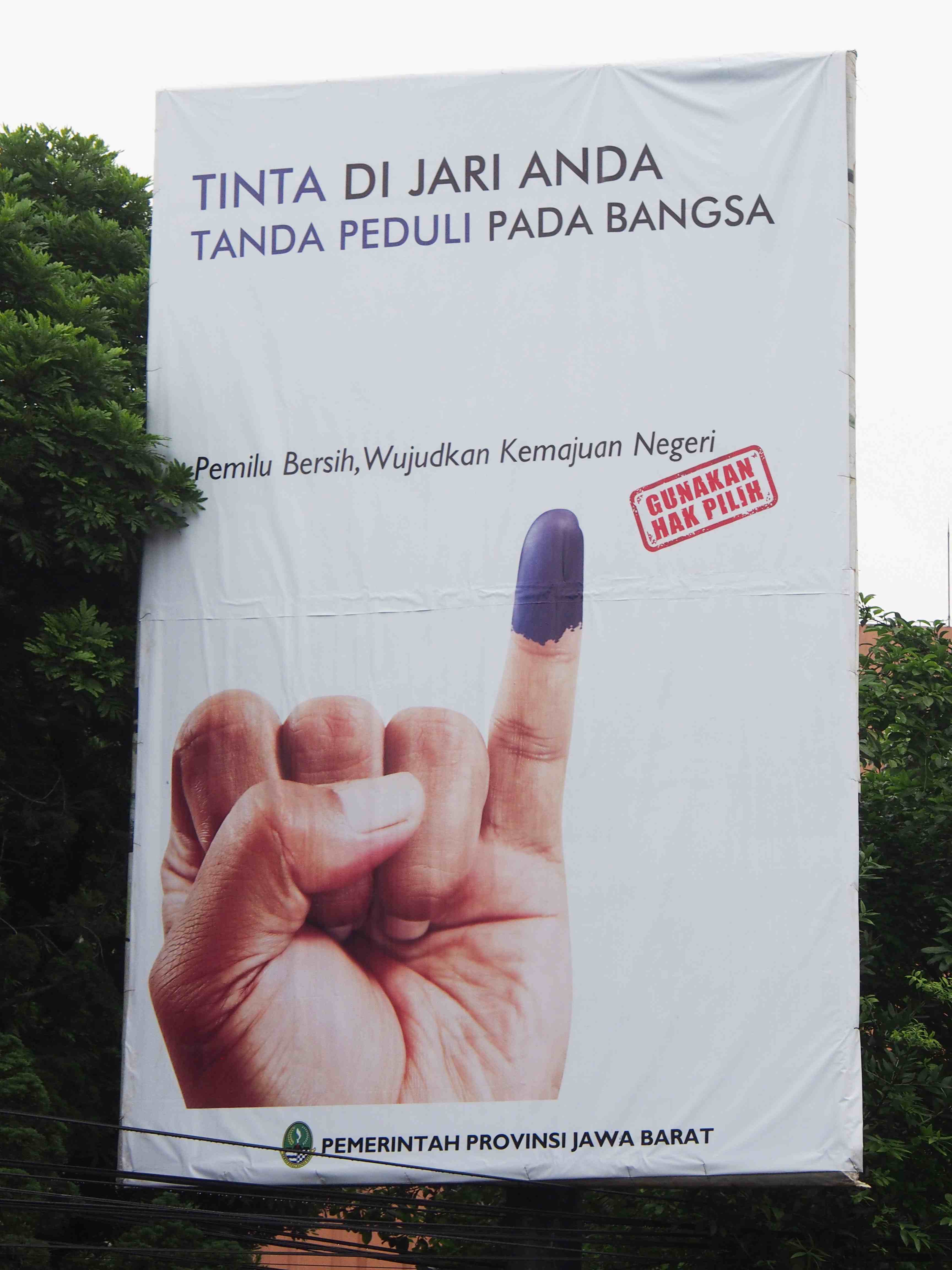- The Indonesian legislative election will be held on 9 April 2014.
- This election will be simultaneously conducted at both at the national and provincial level for over 20,000 seats. At the national level 560 seats are being contested in the People’s Representative Council (Dewan Perwakilan Rakyat or DPR) and 132 in the national Regional Representative Council (Dewan Perwakilan Daerah or DPD). 2,112 seats are being contested at the provincial level and 16,895 are being contested at the regency (Kabupaten/kota) level.
- There are twelve parties registered to take part in the national elections, which have satisfied a range of requirements, including representation in all provinces across the archipelago. For registration, at least one third of the candidates of a party must be female.
- Parties need to win 281 seats in the DPR to secure a majority. Since the Reformasi era (after Soeharto stepped down), all legislatures have been made up of coalitions.
- The key three parties contesting the 2014 election are nationalist - Partai Demokrat (headed by the incumbent President, Susilo Bambang Yudhoyono), Golkar (headed by Aburizal Bakrie, whom it plans to nominate as its Presidential candidate) and PDI-P (headed by Megawati Soekarnoputri, a former President). PDI-P will nominate Joko Widodo, also known as ‘Jokowi’, as its candidate for President).
- Other parties include PKS, PAN, PPP, PKB (which have an Islamic basis), Gerindra (which will nominate Prabowo Subianto, the former son-in-law of President Soeharto, as its Presidential candidate) and Hanura (headed by Wiranto, a former Indonesian military commander).
- Indonesia has a population of over 250 million people, with an estimated almost 188 million voters in 2013. The eligible age to vote is 17 years old. It is estimated that from 53 to 60 million will be young voters.
- Voting is not compulsory, but voting rates are high, with average participation rate in the past being 76.75 per cent of eligible voters.
- There are an estimated 550,000 polling stations. The fact that the election is taking place in an archipelago with 922 inhabited islands, also complicates logistics.
- Indonesian electors vote by punching their ballot papers with a hole and voters’ little fingers are then dipped in semi-permanent ink to ensure that they do not vote elsewhere.
- In tallying the votes locally, ballot papers are held up, so that witnesses can see the light shining through the hole – this has assisted the population gain confidence in the electoral process. During the Soeharto period, election outcomes were known to be rigged.
- Three days before the elections there is a ‘quiet period’, when no campaigning is permitted.
- Presidential elections will be held on 9 July. To take part in these candidates must be nominated by a party or coalition of parties, which has won 25 per cent of the vote or secured 20 per cent of the seats in the legislature after the April 2014 elections.
Helen Pausacker is the Deputy Director of the Centre for Indonesian Law, Islam and Society.


